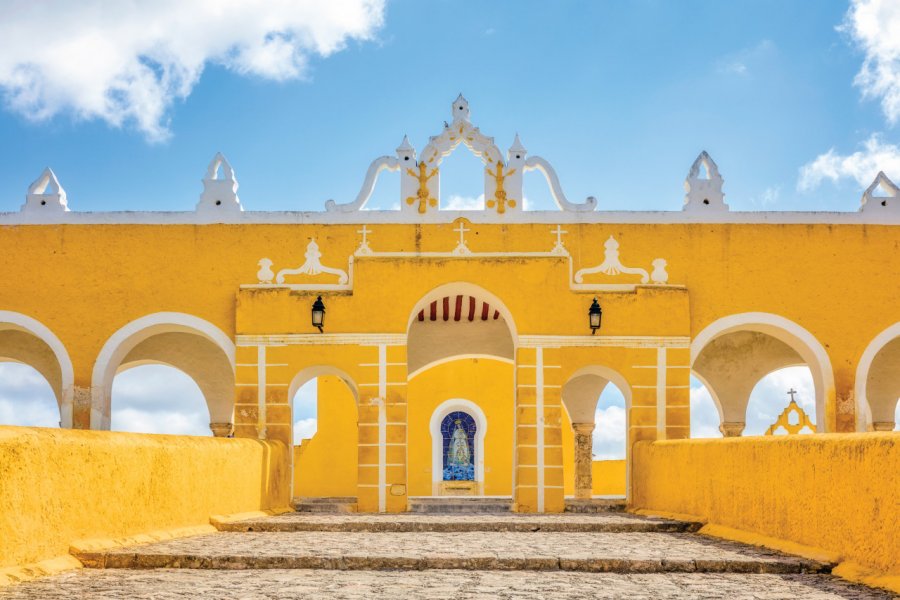Travel Guide Izamal
Find an accommodation
Advertising
An hour's drive east of Merida, Izamal is an unmissable stop: it is one of the most beautiful villages in Yucatán, but also an architectural summary of the confrontation between the Mayan and Spanish cultures that took place after the conquest: six archaeological remains are scattered throughout the village, while the imposing San Antonio de Padua convent stands in its centre. The "place of the hills" was a very important ceremonial centre during the classical period. Legend has it that the city was founded by the celestial god Itzamná. His body was divided into three and each part was buried under one of the three hills of the city. Temples were built on each of them, the most important of which was dedicated to the sun god Kinich Kakmó, "the sunbird with the blazing face". When the Spaniards conquered the city around 1540, many Mayan buildings were razed to the ground to build a new city, in accordance with European architectural canons. The temple of Pap-Hol-Chac, in particular, was demolished to build the convent of San Antonio de Padua (1553-1561), which has the largest atrium in the world after that of Saint-Pierre-de-Rome. The structure, painted in ochre, has seventy-five arcades. Nevertheless, some pre-Hispanic temples survived in the backyards of houses or on hilltops, so that today the Mayan pyramids coexist alongside colonial and modern buildings. This is why Izamal is nicknamed "the city of the three cultures", but it is best known as the "yellow city" since all its houses are painted yellow and white, echoing the visit of Pope John Paul II in 1993.
What to visit Izamal?
Suggested addresses Izamal
Weather at the moment
Advertising
Organize your trip with our partners Izamal
Transportation
Book your plane tickets
Car Rental
Boat rental
Accommodation & stays
Find a hotel
Holiday rental
Find your campsite
Tailor-made trip
Immersion travel
Services / On site
Activities & visits
Find a doctor
Izamal travel inspiration
Find unique Stay Offers with our Partners
Pictures and images Izamal
Other destinations nearby Izamal
100 km away














